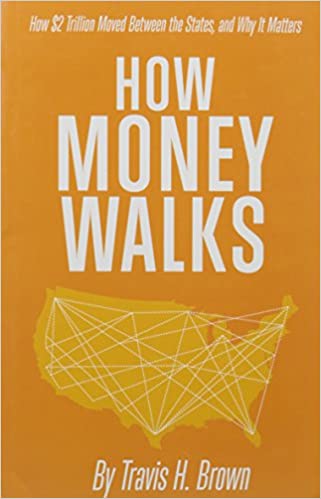Between 1995 and 2010, millions of Americans moved between the states, taking with them over $2 trillion in adjusted gross incomes. Two trillion dollars is equivalent to the GDP of California, the ninth largest in the world. It s a lot of money. Some states, like Florida, saw tremendous gains ($86.4 billion), while others, like New York, experienced massive losses ($58.6 billion). People moved, and they took their working wealth with them. The question is, why? Why did Americans move so much of their income from state to state? Which states benefited and which states suffered? And why does it matter? Using official statistics from the IRS, How Money Walks explores the hows, whys, and impact of this massive movement of American working wealth. Consider these facts. Between 1995 and 2010: -The nine states with no personal income taxes gained $146.2 billion in working wealth -The nine states with the highest personal income tax rates lost $107.4 billion -The 10 states with the lowest per capita state-local tax burdens gained $69.9 billion -The 10 states with the highest per capita state-local tax burdens lost $139 billion Money and people moved from high-tax states to low-tax ones. And the tax that seemed to matter the most? The personal income tax. The states with no income taxes gained the greatest wealth, while the states with the highest income taxes lost the most. Why does this matter? Because the robust presence of working wealth is the leading indicator of economic health. The states that gained working wealth are growing and thriving. The states that lost working wealth lost their most precious cargo their tax base and the consequences are dire: stagnation, deterioration, an economic death spiral as they continue to raise taxes and lose people, businesses, and working wealth. The numbers don’t lie. When I read How Money Walks, I thought, It s about time. Finally, we have a book that addresses one of our nation s most critical (yet rarely discussed) fiscal issues: the migration of working wealth as a direct result of personal income tax rates. Brown s book paints a clear portrait of where money goes and why. How Money Walks should be required reading for anyone who wants to understand why some states struggle to retain people and businesses while others welcome billions of new dollars each year. Dr. Arthur Laffer Founder and chairman, Laffer Associates and Laffer Investments Former economic advisor to President Ronald Reagan







